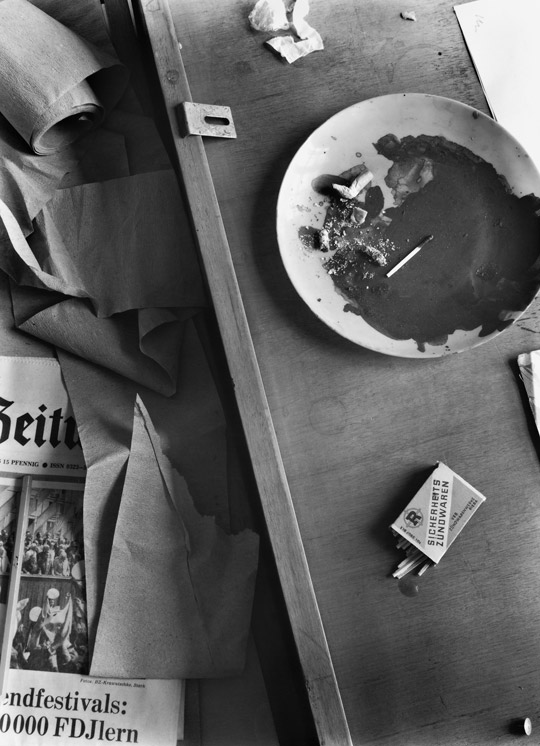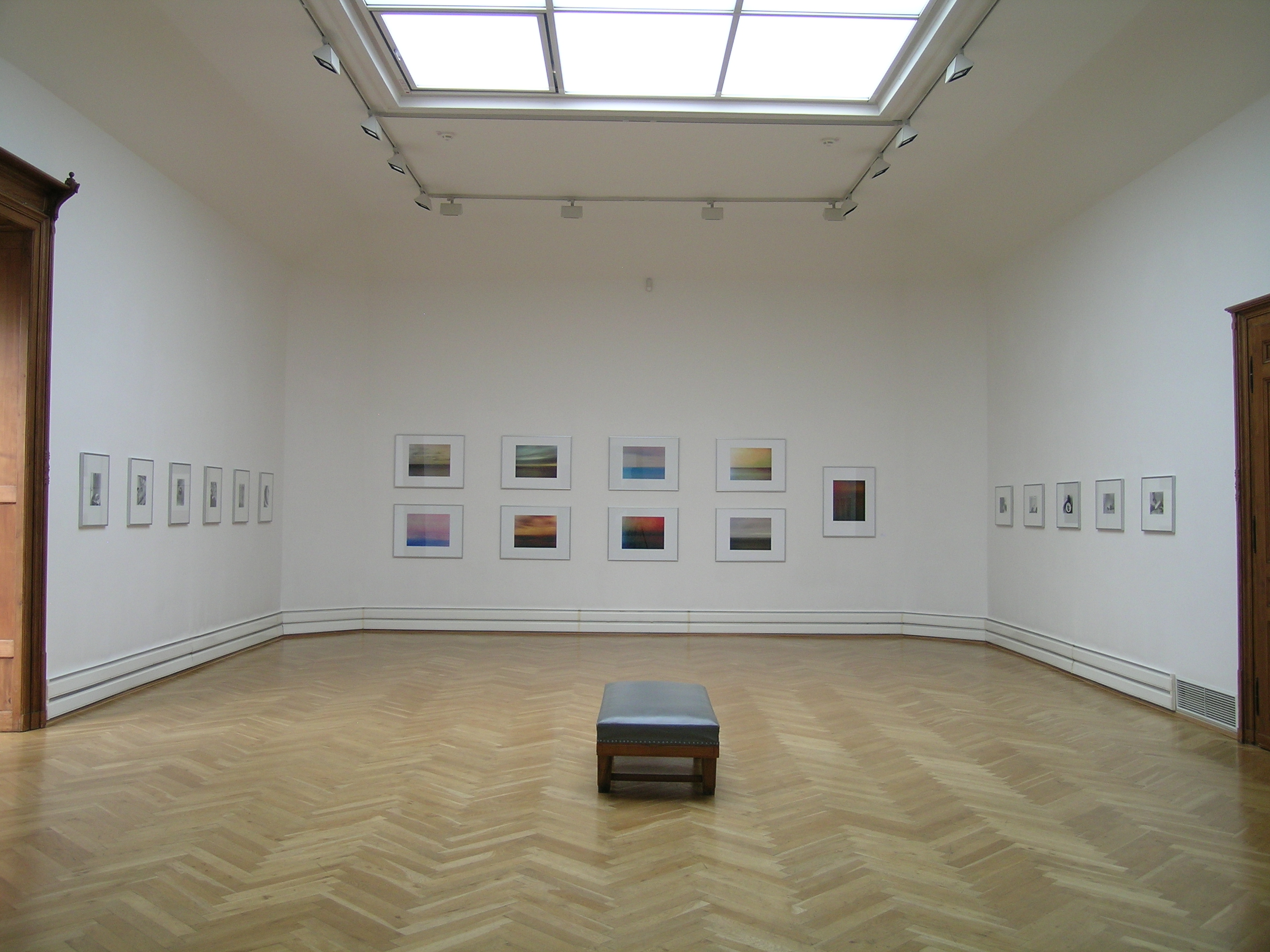
Manfred Paul took photographs in Dresden artists' studios between 1984 and 1988. These images are characterised by the realities of a political system in its final stages. The photographer focussed on the faces and living spaces of the bohemians in a utopia that had long since fallen into agony. Alert faces, self-confident, resistant; characters who were no longer really accessible to the repression of a petty-bourgeois functionary state called the GDR: Via Lewandowski, Angela Hampel, Wolfram Adalbert Scheffler, Christine Schlegel and others. Fifteen of these portraits are shown in the exhibition; more than twice as many in the catalogue "Dresden 1984 - 1988" published to accompany the exhibition.
The leaden times of the late GDR are also reflected in another of Paul's subjects. From his still lifes, as from the great works of this genre in the Renaissance and Baroque periods, the question of the meaning of existence shines through. Ceramic fragments converted into an ashtray are just as much an image of transience as the empty half of a grapefruit on the windowsill or the bouquet of field flowers in front of the weathered wall. Eggs, fruit and fish bones are just as much a memento mori as the plug hanging from a broken socket. Well thought out and carefully staged, Paul's compositions nevertheless do not remain formal aesthetic gimmicks, but become a mirror of half-conscious, half-suspected connections. The 30 or so still lifes on display form the centrepiece of the exhibition. The book "Nature Morte" (spector books) is available to accompany the exhibition.
Also on display are 15 urban landscapes photographed by Manfred Paul in Prenzlauer Berg in the 1980s.
"The black and white photograph in its relentless plasticity is a cruel document of successive extinction. It stands most closely in the tradition of the baroque memento mori, which reminds us of transience in the midst of the lavish abundance of life. The remembrance of the past inherent in photography is an 'exposure', a study of one's own finite fragility begun with open eyes."
- PROF. DR. EUGEN BLUME -
Eugen Blume, former director of Hamburger Bahnhof, Museum für Gegenwart Berlin, spoke at the opening on Friday, 16 June at 8 pm.
The artist was present.

Catalogues
Two catalogues were published for the exhibition.























